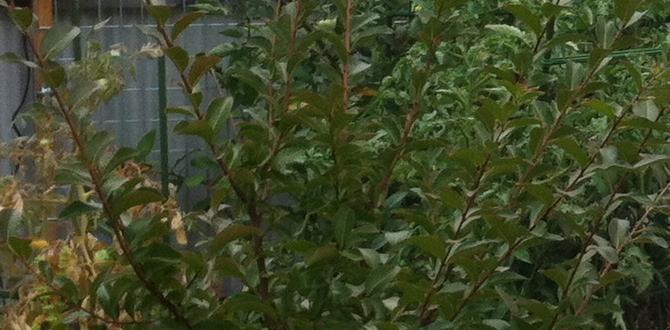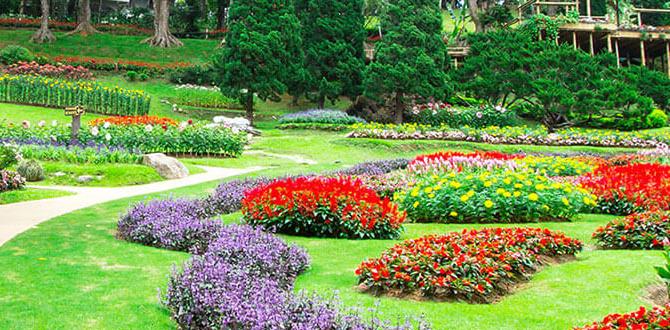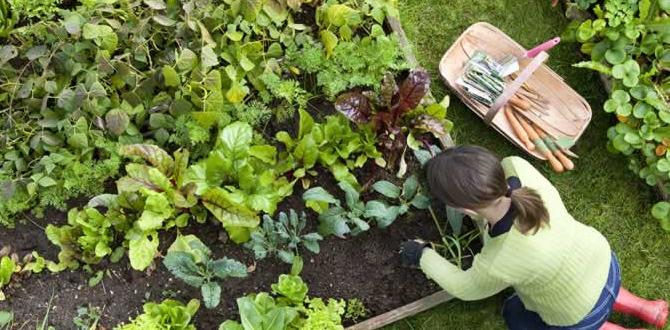One of the most common questions when planting iris bulbs is how deep they should be. There isn’t a one-size-fits-all answer to this question, as it depends on various factors such as your climate and soil type.
Here we’ll take you through everything you need to know about how deep to plant iris bulbs, from understanding the Iris plant and its bulbs, preparing the soil for plantation, to 5 tips for how deep to plant them. We’ll also cover the ideal time for planting iris bulbs, factors to consider when planting them, common mistakes to avoid, how to protect them from pests and diseases, and proper care and maintenance after planting.
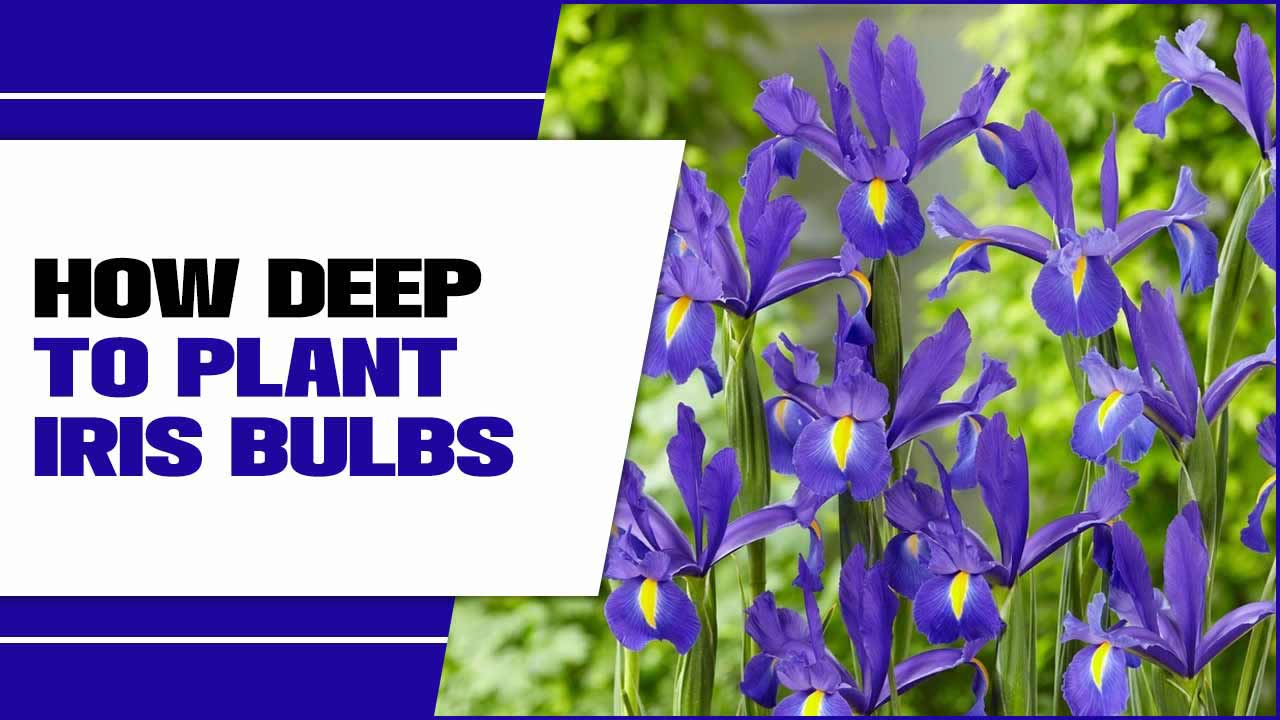
5 Tips For How Deep To Plant Iris Bulbs
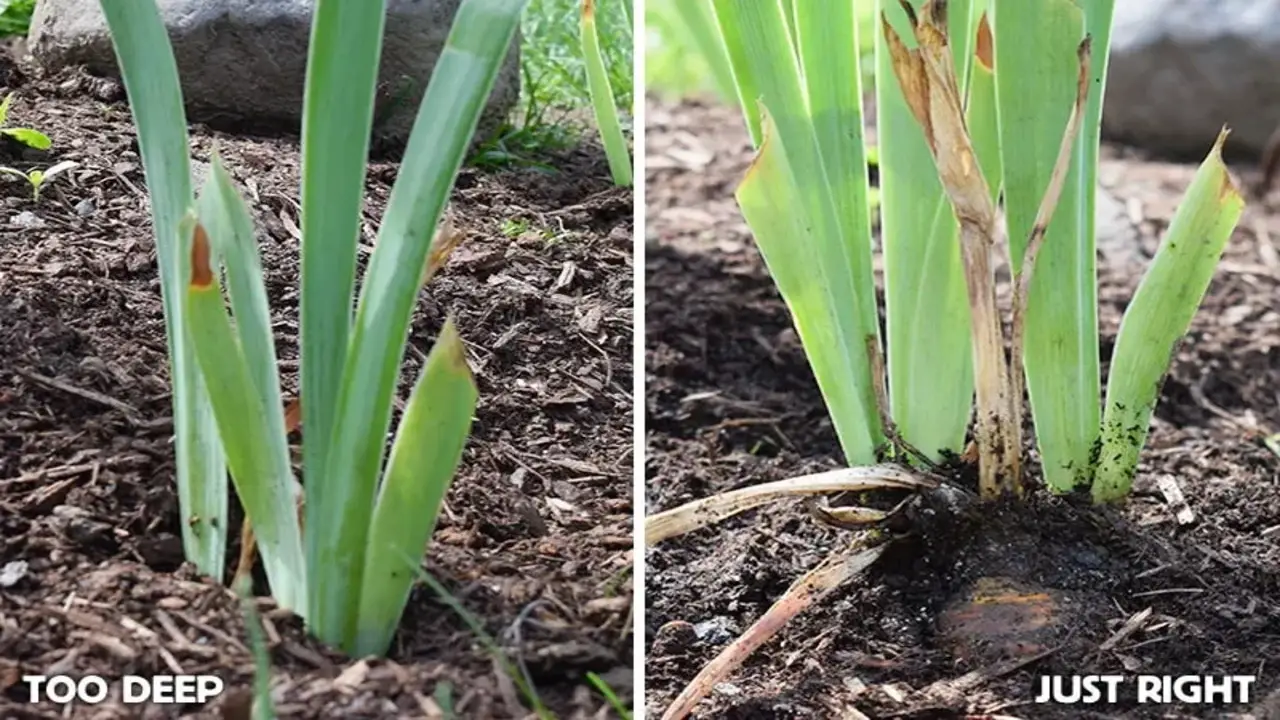
Iris bulbs, or rhizomes, should be planted in full sun during the early spring or late fall. The most common mistake when planting bearded iris rhizomes is burying them too deep. Planting the rhizomes just below ground level is crucial, allowing the top to be exposed to the sun. When planting iris bulbs, it is important to ensure that they are planted at the correct depth. Here are five tips to help you determine how deep to plant iris bulbs:
Follow The General Rule
When planting iris bulbs, following the general rule of thumb for depth is important. Generally, iris bulbs should be planted about two to three times their own height deep. If your iris bulbs are about 2 inches tall, you should aim to plant them around 4 to 6 inches deep in the soil.
Planting them at this depth allows for proper root development and stability while allowing the foliage to emerge above ground. Remember that different varieties of iris may have slightly different planting depths, so it’s always a good idea to refer to specific instructions or guidelines provided by the nursery or bulb supplier.
Consider Your Climate
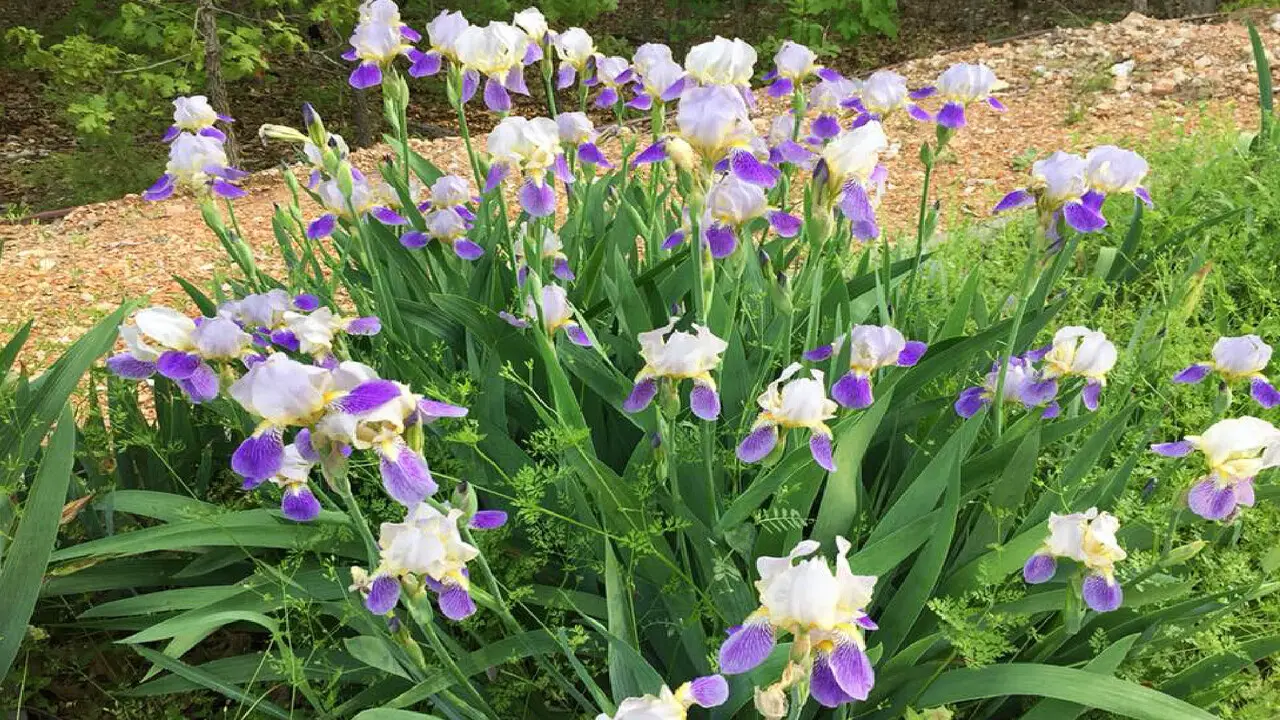
When planting iris bulbs, it is important to consider the climate you live in. Irises are typically hardy plants that can tolerate various temperatures, but different varieties may have specific requirements. For example, bearded irises are more adaptable and can thrive in various climates, while Siberian irises prefer cooler climates and may struggle in hot, humid areas.
Before planting your iris bulbs, research the specific needs of your chosen variety to ensure that they will thrive in your climate. This will help to ensure that your irises grow and bloom beautifully year after year.
Know Your Soil Type
Knowing your soil type is essential when planting iris bulbs. Irises thrive in well-drained soil, so it is important to understand the composition of your soil before planting. Sandy soils drain quickly and require more frequent watering, while clay soils retain moisture and may need amendments such as compost or sand to improve drainage. Loamy soils, which have a balanced texture, are ideal for irises.
To determine your soil type, you can perform a simple test by grabbing a handful of moist soil and squeezing it. Sandy soil will crumble easily; clay soil will form a hard ball that retains its shape, and loamy soil will hold together but still break apart easily. Knowing your soil type ensures that your iris bulbs have the best chance of thriving in their new home.
Space Them Properly
When planting iris bulbs, it is important to space them properly to ensure optimal growth and blooming. Iris bulbs should be planted about 12-24 inches apart, depending on the size of the bulb and the variety of iris. This spacing allows enough room for the bulbs to develop and expand without overcrowding each other. It also helps to prevent competition for nutrients and sunlight, which can lead to stunted growth or poor flowering. By giving your iris bulbs the right amount of space, you can help them thrive and create a beautiful display in your garden.
Mulch For Insulation
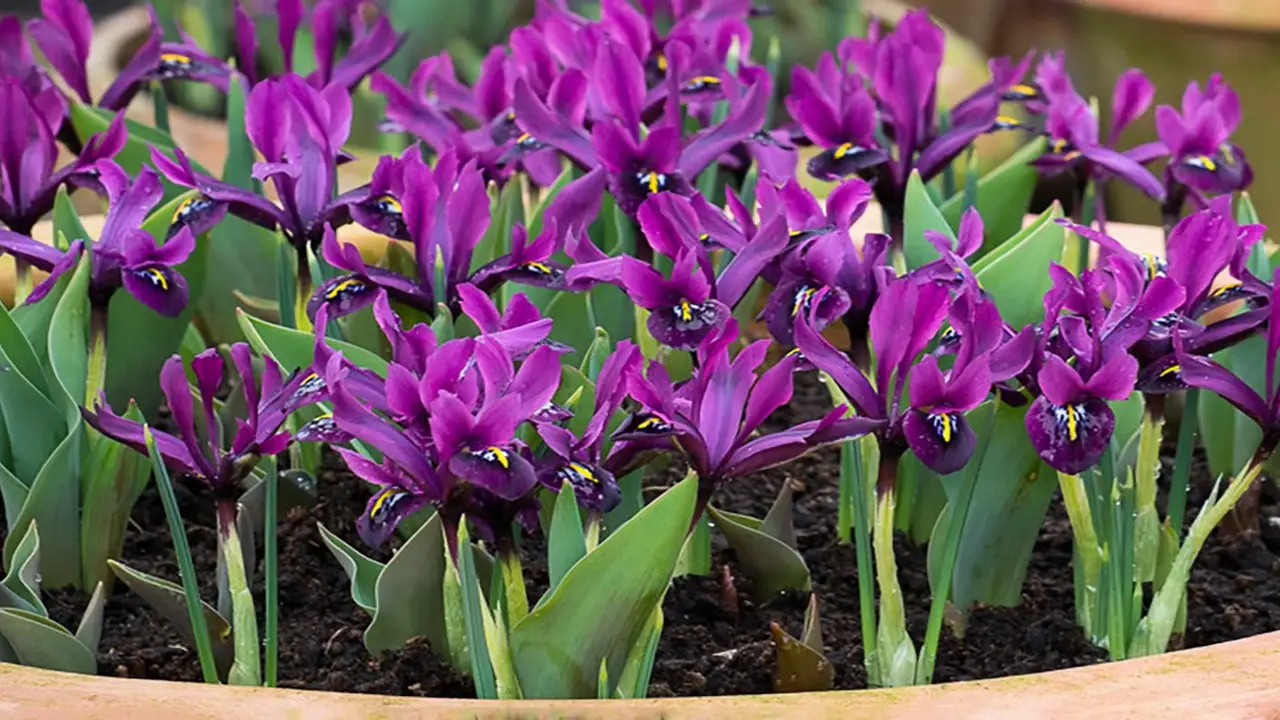
Mulching is an important step in planting iris bulbs, as it provides insulation and protection for the bulbs during the winter months. After planting the bulbs at the appropriate depth, spread a layer of mulch around the base of the plants.
This will help to regulate soil temperature and moisture levels, preventing the bulbs from drying out or freezing. Organic materials such as straw, wood chips, or shredded leaves are ideal for mulching iris bulbs. Apply a layer about 2-3 inches thick, ensuring not to cover the emerging foliage. Mulching helps insulate the bulbs, suppresses weed growth, and improves overall soil health.
The Ideal Time For Planting Iris Bulbs
Knowing the ideal time for planting iris bulbs is crucial to ensure their successful growth and blooming. Generally, iris bulbs should be planted in late summer or early fall, around 4 to 6 weeks before the first frost. This timing allows the bulbs to establish their root systems before the winter months.
Planting them too early in the spring may result in poor growth and delayed blooming. Choosing a location with well-drained soil and full sun exposure for your iris bulbs is important. When planting, bury the bulbs about 2 to 3 inches deep, with the pointed end facing upwards. Following these guidelines will help you achieve beautiful and vibrant irises in your garden.
Factors To Consider When Planting Iris Bulbs
When planting iris bulbs, several factors must be considered to ensure successful growth and blooming. By considering these factors and following these tips, you can ensure that your iris bulbs can thrive and produce beautiful blooms in your garden. Here are some tips to keep in mind:
- Depth: Iris bulbs should be planted about 2 to 4 inches deep in the soil. This will provide them with enough insulation and stability while allowing the roots to establish properly.
- Soil Type: Irises prefer well-draining soil, so make sure the planting area has good drainage. To improve drainage, you can amend heavy clay or compacted soil with organic matter or sand.
- Sun Exposure: Irises thrive in full sun or partial shade. Choose a location that receives at least six hours of direct sunlight daily for optimal growth and blooming.
- Spacing: When planting iris bulbs, space them about 12 to 18 inches apart. This will give each plant enough room to grow and spread without overcrowding.
- Watering: After planting, water the bulbs thoroughly to help settle the soil around them. Once established, irises are relatively drought-tolerant but will benefit from regular watering during dry spells or prolonged periods of heat.
Common Mistakes To Avoid When Planting Iris Bulbs

When planting iris bulbs, it’s important to avoid common mistakes that can affect their growth and overall health. By avoiding these common mistakes, you can increase the chances of success when planting iris bulbs and enjoy beautiful flowers year after year. Here are a few tips to help you plant iris bulbs correctly:
- Planting Too Deep: Iris bulbs should be planted shallowly, typically with the top of the bulb exposed or barely covered by soil. Planting them too deep can prevent them from receiving adequate sunlight and may inhibit their flowering ability.
- Plant In Poorly Drained Soil: Iris bulbs prefer well-drained soil, as they are susceptible to root rot if they sit in waterlogged conditions for extended periods. Make sure to choose a planting location with good drainage or amend the soil with organic matter to improve drainage.
- Crowding The Bulbs: When planting iris bulbs, give them enough space to grow and spread. Crowding the bulbs can lead to competition for nutrients and moisture, stunting their growth and affecting their overall health.
- Failing To Provide Adequate Sunlight: Iris plants thrive in full sun conditions. Choose a planting location that receives at least six hours of direct sunlight daily to ensure healthy growth and abundant blooms.
How To Protect Iris Bulbs From Pests And Diseases
When planting iris bulbs, protecting them from pests and diseases is important. By following these tips, you can help protect your iris bulbs from common pests and diseases and ensure they thrive in your garden. Here are some tips to help you keep your iris bulbs healthy and thriving:
- Choose A Well-Draining Location: Iris bulbs are susceptible to rotting if planted in soil that does not drain well. Choose a location with good drainage to prevent water from sitting around the roots.
- Provide Adequate Spacing: Plant your iris bulbs at least 12-24 inches apart for proper air circulation. Crowded plants can create a humid environment conducive to the growth of pests and diseases.
- Mulch With Care: While mulching can help retain moisture and suppress weed growth, it is important not to pile mulch directly on top of the iris bulbs. This can create a hiding place for pests and lead to bulb rot. Instead, spread a thin layer of mulch around the plant’s base, exposing the tops of the bulbs.
- Monitor For Pests And Diseases: Regularly inspect your iris plants for signs of pests or diseases such as aphids, thrips, or fungal infections. If you spot any issues, take appropriate action immediately to prevent further damage.
Proper Care And Maintenance After Planting Iris Bulbs
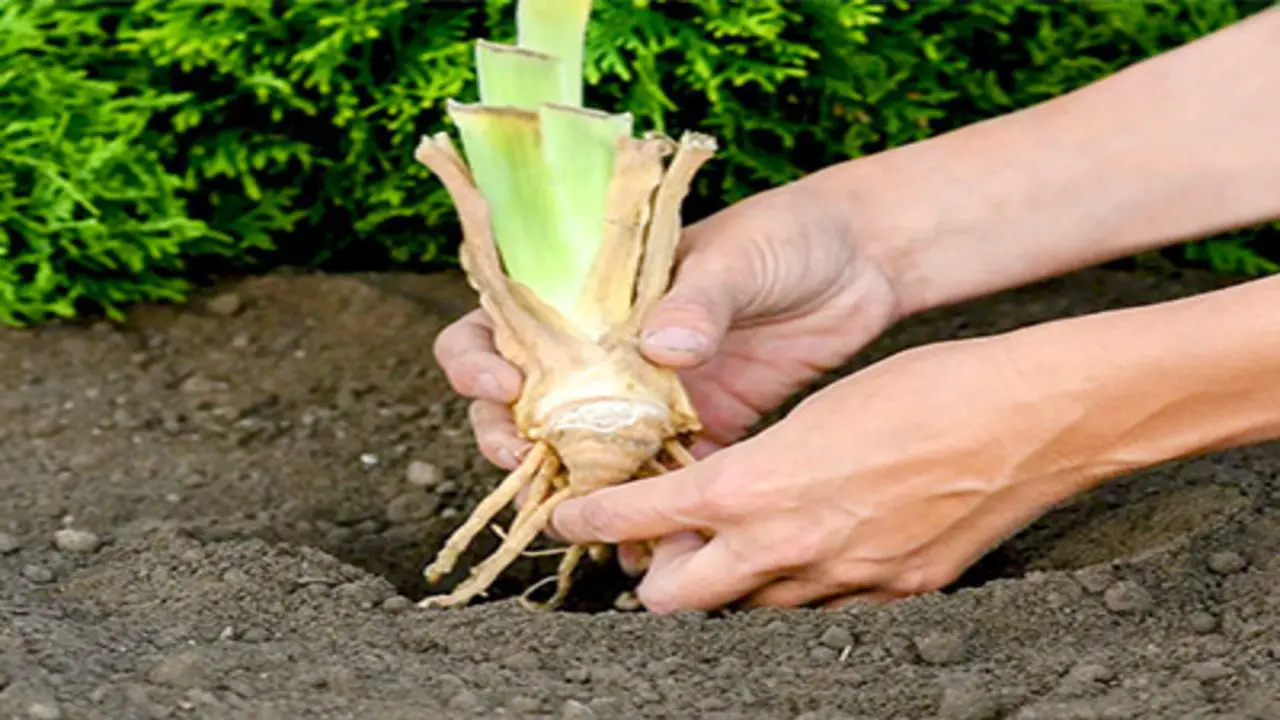
Proper care and maintenance after planting iris bulbs are essential for ensuring their successful growth and blooming. By following these care and maintenance tips, you can ensure that your iris bulbs thrive and produce beautiful blooms year after year. Here are some tips to help you take care of your newly planted iris bulbs:
- Watering: Iris bulbs should be watered regularly, especially during the first few weeks after planting. Keep the soil moist but not soggy, as excessive moisture can lead to rotting.
- Fertilizing: Iris bulbs benefit from a balanced fertilizer applied in early spring and again after blooming. Use a slow-release granular or liquid fertilizer diluted according to the package instructions.
- Mulching: Apply a layer of organic mulch around the base of the iris plants to help retain moisture, suppress weed growth, and regulate soil temperature.
- Pruning: After flowering, remove spent blooms by cutting the flower stalks down to the base of the plant. Avoid cutting back the leaves until they turn yellow or brown as they continue to nourish the bulb.
- Division: Over time, iris bulbs can become overcrowded and may need to be divided every three to four years. Dig up the clumps in late summer or early fall, separate them into smaller sections with healthy rhizomes and roots, and replant them at the appropriate depth.
Conclusion
Planting iris bulbs at the right depth is crucial for their growth and blooming. Following the general rule of planting them 2 to 3 times their height is a good starting point. However, it’s important to consider your climate, soil type, and spacing to ensure optimal growth.
Adding mulch around the bulbs helps insulate and protect them from extreme temperatures. Planting iris bulbs at the ideal time, avoiding common mistakes, and providing proper care and maintenance will help them thrive. By following these guidelines, you can enjoy the beauty of iris flowers in your garden year after year. So it is essential to know how deep to plant iris bulbs.
Frequently Asked Questions
1.Should I Soak Iris Bulbs In Water Before Planting?
Ans: Soaking iris bulbs in water before planting is optional but can promote growth. Softening the outer layer by soaking in lukewarm water for 24 hours may help. If you choose to soak, plant them immediately after. Remember, proper planting depth and well-draining soil are crucial for success.
2.Can Iris Be Planted Too Deep?
Ans: Planting iris bulbs too deep can lead to rotting or failure to bloom. Cover the bulb with soil so the top is just below the surface to ensure success. Follow specific planting instructions for your iris type, and enjoy beautiful blooms.
3.How Far Apart Do You Plant Tall Bearded Irises?
Ans: When planting tall bearded irises, giving them enough space to grow and develop is important. A recommended 18-24 inches distance between each bulb ensures they won’t become overcrowded and hinder their growth. Remember to check specific instructions for your iris variety, as spacing requirements may vary.
4.Should I Soak Iris Bulbs Before Planting?
Ans: Soaking iris bulbs before planting can enhance their growth by allowing them to absorb moisture and nutrients. To do this, soak the bulbs in lukewarm water for a few hours or overnight. However, avoid soaking them for too long as it may cause rotting. This technique is particularly beneficial for dry soil or hot climates.
5.Are There Any Special Considerations For Planting Different Types Of Iris Bulbs, Such As Bearded Or Siberian?
Ans: Different types of iris bulbs, like bearded or Siberian, have specific planting requirements. Bearded iris bulbs should be planted with the rhizome exposed to sunlight, while Siberian iris bulbs should be planted just below the soil surface. Ensure well-draining soil and avoid planting in wet areas. Consider adding fertilizer or compost for improved soil quality.




